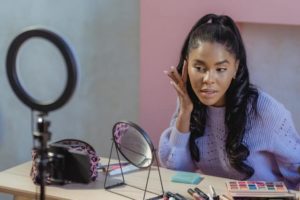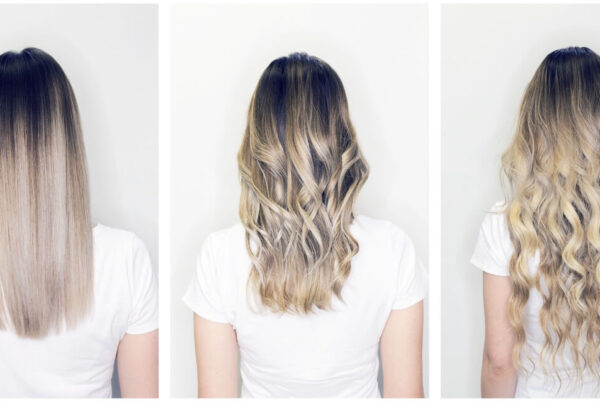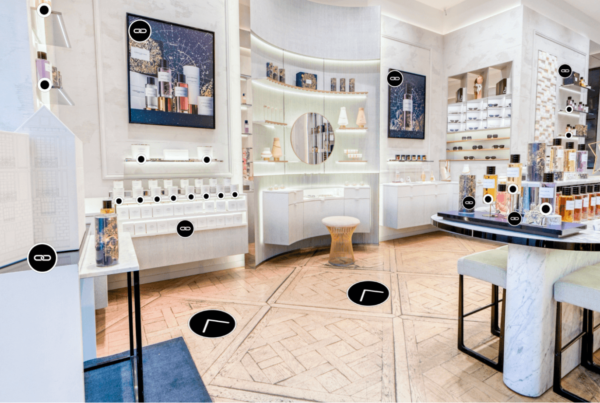Virtual Makeup Try-On and Other Trends to Grow Your Beauty Ecommerce Conversions
Within the last few years, the beauty and personal care ecommerce industry has grown tremendously in the United States, generating $22.54 billion in revenue in 2019. In terms of sales, 23% came from makeup subcategories in 2018. As you can see, these are not small amounts, and we will continue to see more growth.
If you’re running a business in the beauty industry, it’s vital to understand the latest ecommerce trends so that you can build and maintain an ecommerce website that meets your customers’ needs.
2021 Trends in Beauty Ecommerce

With the developments in artificial intelligence (AI) and cloud technology, as well as increased globalization, there are a few key trends currently shaping the beauty ecommerce industry.
Inclusivity and Diversity
In the beauty industry, consumers are looking for products that cater to diverse skin colors and hair types, as well as marketing that speaks to their values, personalities, and lifestyles.
According to GlobalData consumer analyst Lia Neophytou in a Global Cosmetic Industry interview, inclusive beauty is no longer just a movement. It has become a standard that consumers hold brands to. Brands that have kept to these standards are seeing growth in terms of revenue. For example, when Fenty Beauty launched in 2017, they released a large range of makeup colors for diverse skin tones. In its first 40 days, the company saw $100 million in sales.
 Personalized Experiences
Personalized Experiences
Today’s consumers don’t always limit themselves to traditional demographic labels such as gender. In terms of beauty, they tend to be more aware of their personal needs and preferences. Thus, marketing products in a broad way is no longer as effective as it used to be, and one-size-fits-all products may not stand out in the market.
According to an Epsilon survey, 80% of customers are more likely to deal with a brand if it offers personalized experiences. There are many skincare brands, such as Vitruvi and Neutrogena, that are already offering bespoke products and customized regimens. As technology advances and customization becomes even more accessible, it’s likely that more consumers will expect beauty brands to cater to their individual needs.
Big Data, AR, VR, and AI Technologies
Beauty brands have used big data successfully to develop new products and engage with their customers. Now, combining this with other technologies such as augmented reality (AR), virtual reality (VR), and AI, it’s possible to create far more personalized and engaging experiences for customers.
For example, brands can use AI to analyze data and develop personalized experiences for customers. VR and AR allow customers to try on products from their homes, which improves inclusivity as even those who are unable to visit physical retail stores would be able to engage with these brands.
Optimizing Your Ecommerce Website for Better Conversion
With these trends in mind, here are some ways you can optimize your beauty ecommerce website for better conversion rates.
Know and Address Customer Pain Points
 Customer needs and wants will typically change as time goes by. If you want your online store to continue attracting and converting customers, it’s vital to understand what they’re looking for, the problems they’re looking to solve, and any objections they may have.
Customer needs and wants will typically change as time goes by. If you want your online store to continue attracting and converting customers, it’s vital to understand what they’re looking for, the problems they’re looking to solve, and any objections they may have.
Provide a Subscription Option
Just over half of the customers who’ve bought a particular beauty or skincare product say they stick to brands they’ve purchased before. This means almost 50% of customers would switch brands.
One way to promote loyalty is to provide a subscription option so customers can continue to receive the products they like without having to go through the whole process of visiting a store, adding to cart, and checking out, which can potentially lead to customers switching brands.
Offer Product Bundles
If you understand your customers well and know what they’re looking for, you can craft bundles that help them discover more products they’ll love. This also allows them to save money while increasing your average order value.
Reduce Analysis Paralysis
Research shows that having too many options can reduce sales. When customers have to overthink their decisions, they may end up not buying anything. Thus, limiting choices where appropriate can be a good thing. A method you can explore is to set up a quiz-like experience or facial exploration process that provides recommendations at the end.
Integrate a Virtual Makeup Try-On Tool
Even before the pandemic happened, beauty brands were already seeing increases in conversion rates due to virtual try-on experiences. However, there are some important things to remember when choosing the right virtual tool to integrate with your ecommerce store. It needs to be built with inclusive and diverse datasets, as well as perform at high speeds to give customers a personalized, engaging experience. It also needs to comply with privacy standards.
Increase Your Online Store Conversions with AlgoFace AI
If you’re looking to introduce a virtual try-on option for your customers to personalize their experiences on your beauty ecommerce website, check out Virtual Try-On. Our tool ensures:
- Privacy: It complies with General Data Protection Regulation (GDPR) and California Consumer Privacy Act (CCPA) standards.
- Inclusivity and diversity: Being based in the United States, which isn’t homogenous, the data that drives our AI comes from a diverse, inclusive sample and dataset.
- Fast, on-the-edge performance: The identity-free biometrics built into our tool allows our tech to process data in real time and operate at lightning speed even with large datasets.
- Accuracy: Precise by design, our tool can track up to 209 landmark points on a face, which means it can better map your customers’ facial expressions.
To get started, request a free trial of Makeup AR-tist today.



